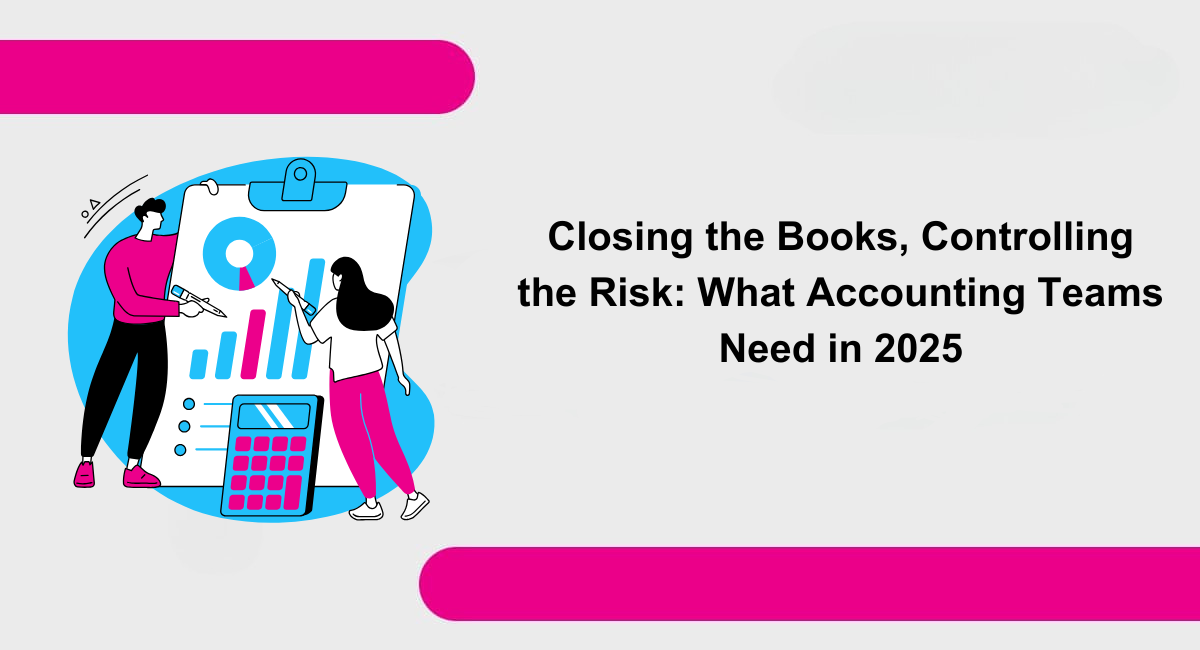Closing the Books, Controlling the Risk: What Accounting Teams Need in 2025
As risk management becomes inseparable from core accounting and reporting functions, accounting teams are being challenged to navigate an increasingly evolving macro-economic landscape.The month-end close, which was once viewed primarily as a compliance ritual, is now a central control point. It now determines whether organizations identify risks early or allow them to unfold into systematic problems.
This evolution is driven by two converging forces: the complexity of financial transactions and the transformative impact of technology.The volume of data flowing through financial systems has grown exponentially, while transactions span multiple platforms, geographies, and currencies. Automation and advanced analytics are no longer optional, they are the baseline for safeguarding accuracy and maintaining audit readiness.
Organizations cannot rely on manual review to keep pace with the scale and speed of modern finance. However, the adoption of technology alone is not enough. It must be paired with disciplined processes and a risk-aware mindset to ensure that new systems enhance rather than weaken control.
Why Do Manual Accounting Processes Put Your Close at Risk?
Manual processes remain one of the most consistent sources of operational risk in accounting. Research consistently shows that spreadsheet-based work is error prone:
- Up to 94% of financial spreadsheets contain errors, leaving organizations exposed to material misstatements when relying on them for forecasting or reconciliation.
- These flaws are not limited to simple data entry mistakes. Reconciliation mismatches can lead to MEC delays, restatements and audited financial statements that require adjustment.
Spreadsheet quality assurance is often used as a control, but validating spreadsheets is time-consuming. Finance teams may spend dozens of hours per month checking for inconsistent data validity. In many cases, this effort pulls highly skilled people off strategic work and still may fail to fully eliminate underlying errors. That’s why more organizations are shifting toward a more proactive approach, risk-based reconciliation.
What is Risk-Based Reconciliation?
Static, checklist-driven reconciliations no longer provide adequate assurance. Leading organizations are adopting a risk-based reconciliation framework.
Rather than waiting until month-end to identify anomalies, risk-based reconciliation involves:
- Continuous monitoring of exception thresholds using automation tools that apply rules to flag unusual data flows in the general ledger.
- Early review of unusual items supported by a clear plan or checklist to ensure timely resolution and consistent handling.
This stance not only reduces last-minute surprises but also provides executives with timely insights into the risk profile of their operations. Furthermore, this also positions finance teams to meet the heightened expectations of today’s audit environment.
What Makes Audit Readiness Critical for Accounting Teams?
Audit teams in 2025 expect more than reconciled balances; they require clear evidence of review, resolution, and documentation. Regulatory frameworks such as SOX 404 emphasize that accounting leaders must be able to demonstrate both control design and operating effectiveness, with reconciliation at the center of that requirement.
Strong audit trails are essential. Details such as who prepared or approved an account, when exceptions were cleared, and why adjustments were made are subject to heightened scrutiny.
In many industries, the quality of reconciliation controls has become a representation for overall financial governance. Weaknesses in this area can quickly extend the close period or worse, erode investor confidence and invite regulatory or audit intervention. When reconciliations are incomplete or delayed, auditors frequently need to conduct additional testing and follow-up work, which can extend audit timelines and increase audit costs.
The Bottom Line: Reconciliation Controls Define Resilience to Risk
Accuracy in the month-end close is nonnegotiable, but lasting resilience comes from controlling the processes behind it. The strongest finance teams treat reconciliations as a discipline of continuous improvement, not a recurring chore.
Continuous improvement means using automation to monitor exception patterns, anticipate fluctuations, and set clear thresholds that trigger alerts. With a structured process in place, risks can be addressed before they escalate, while deeper analysis of recurring mismatches helps uncover and resolve underlying process or system deficiencies.


